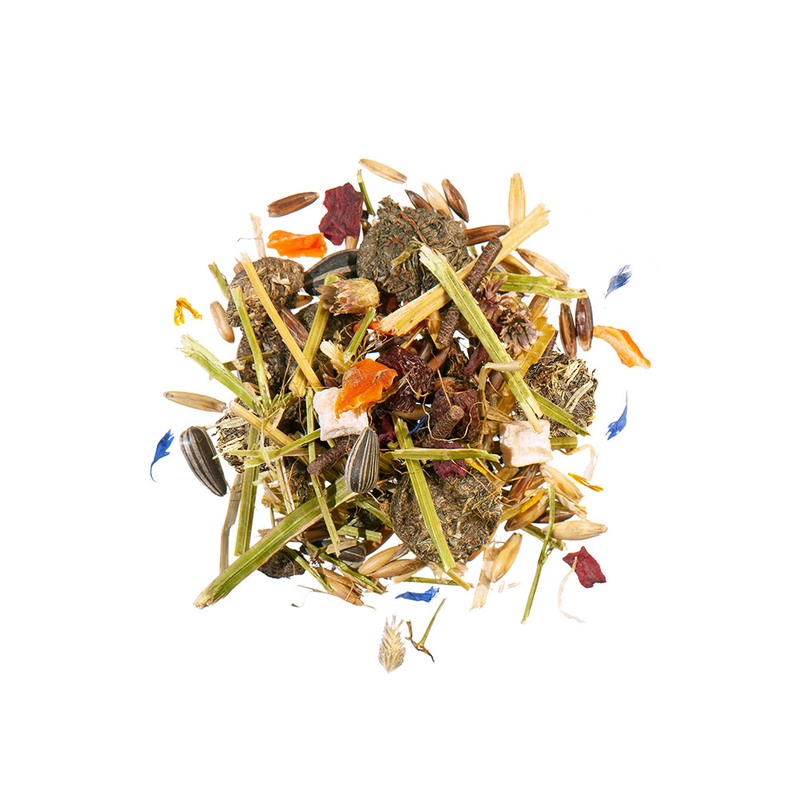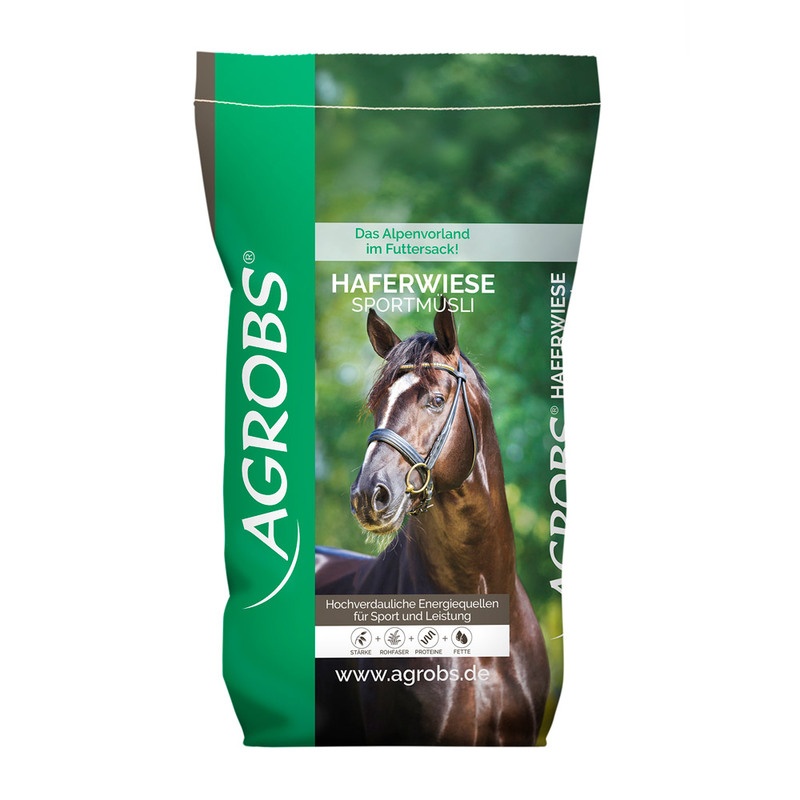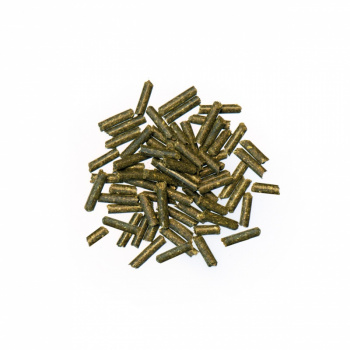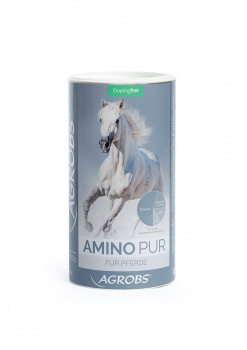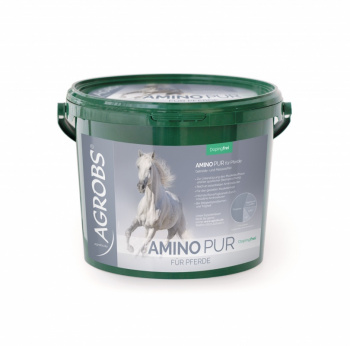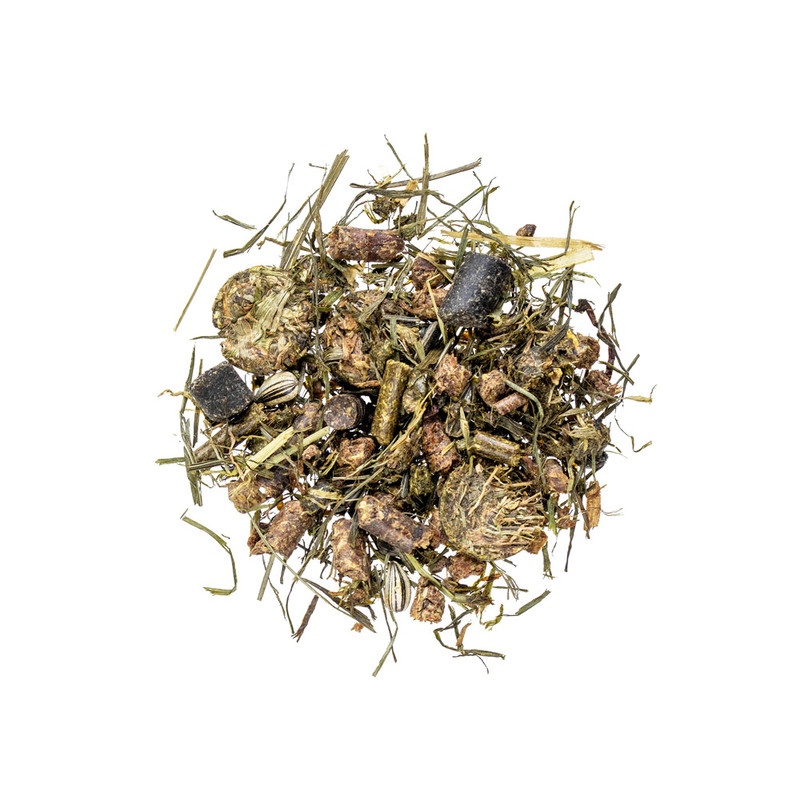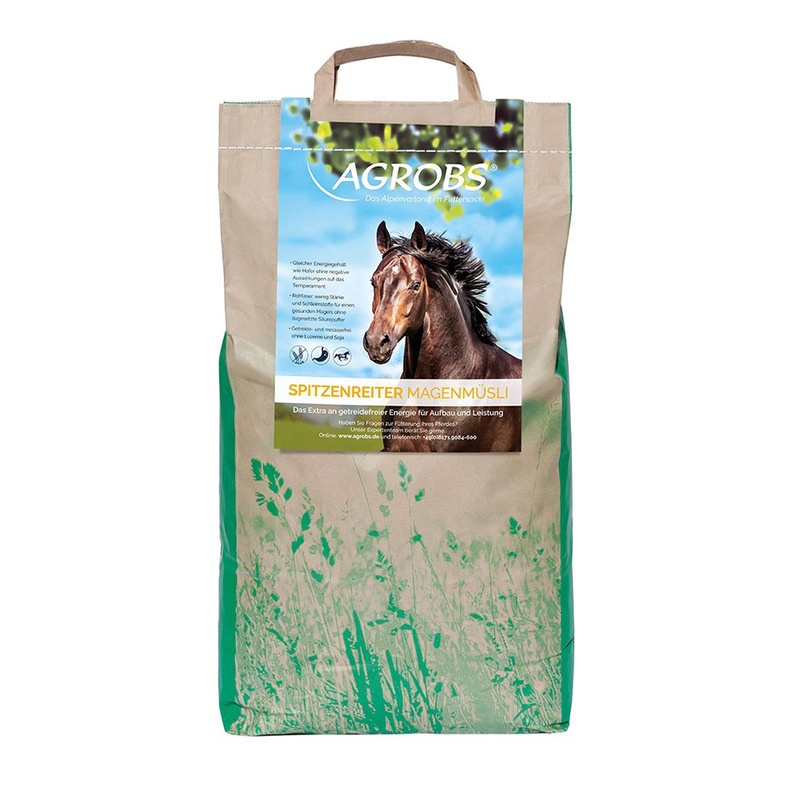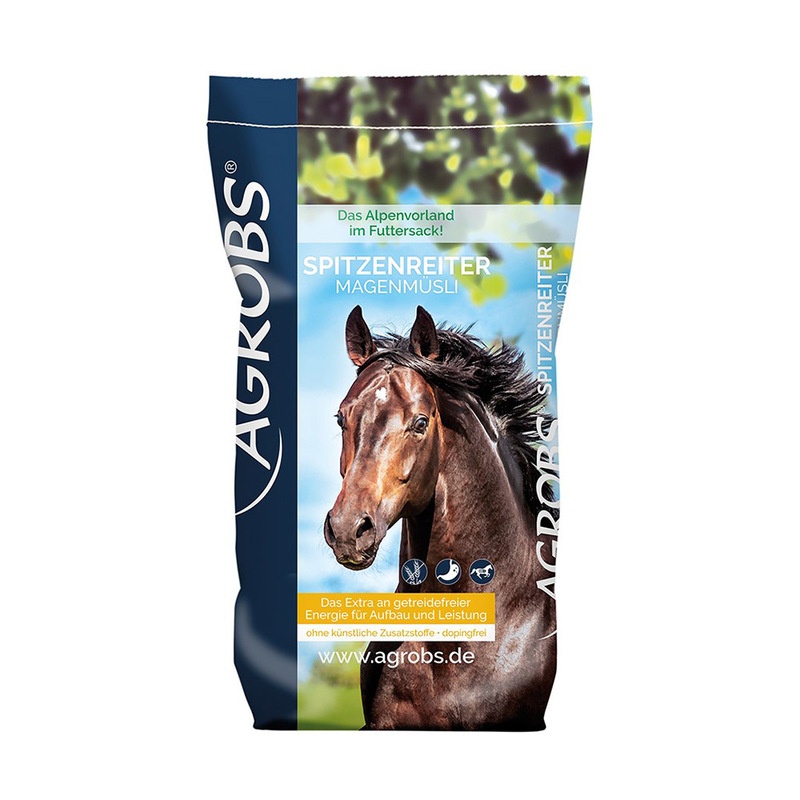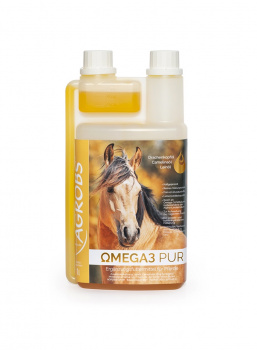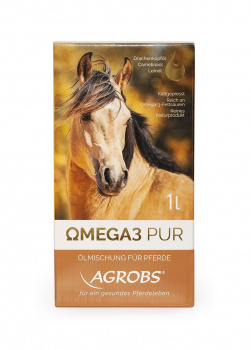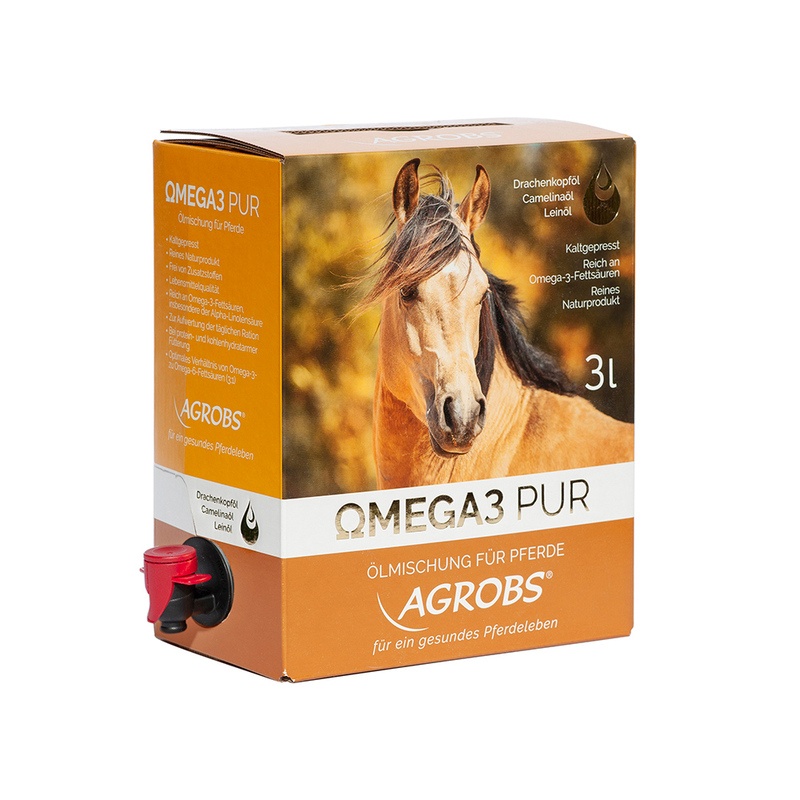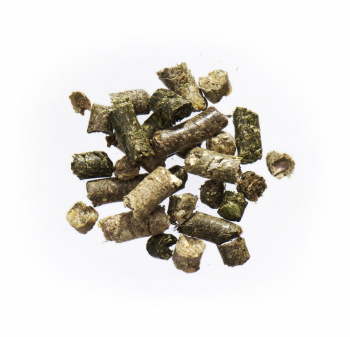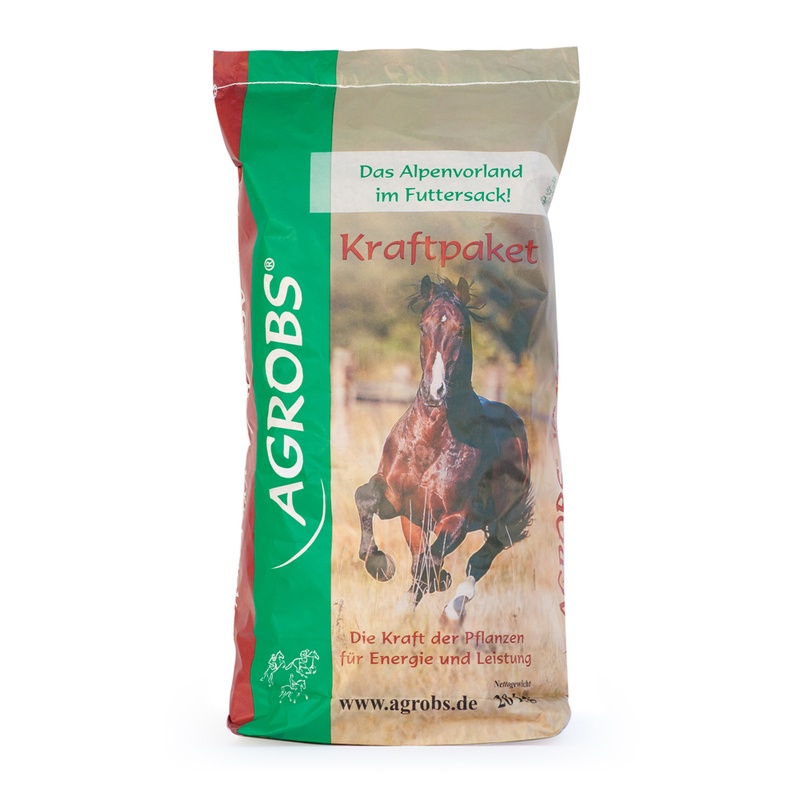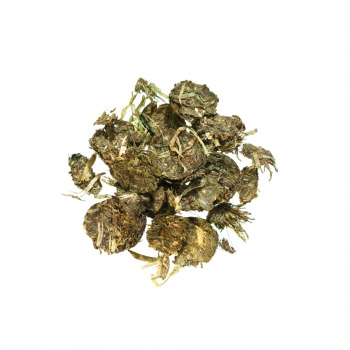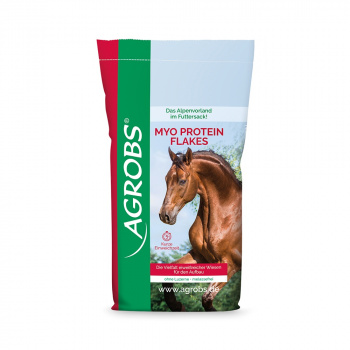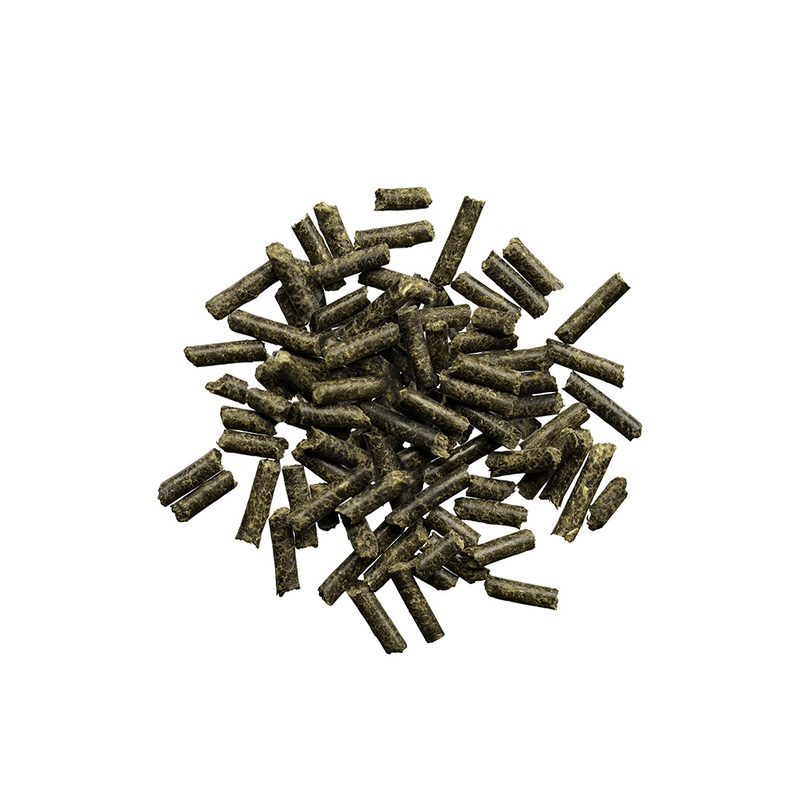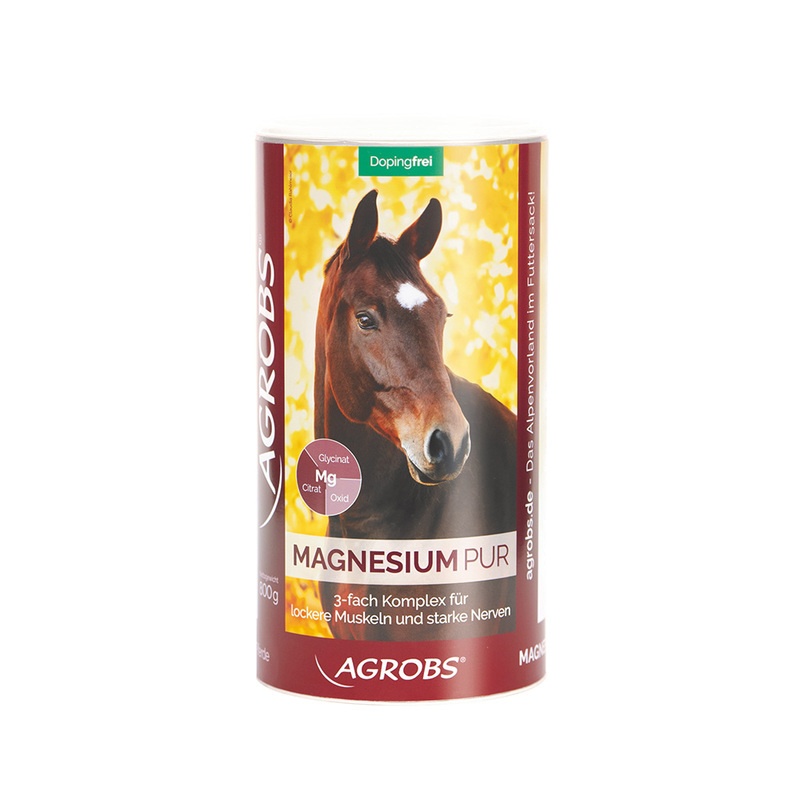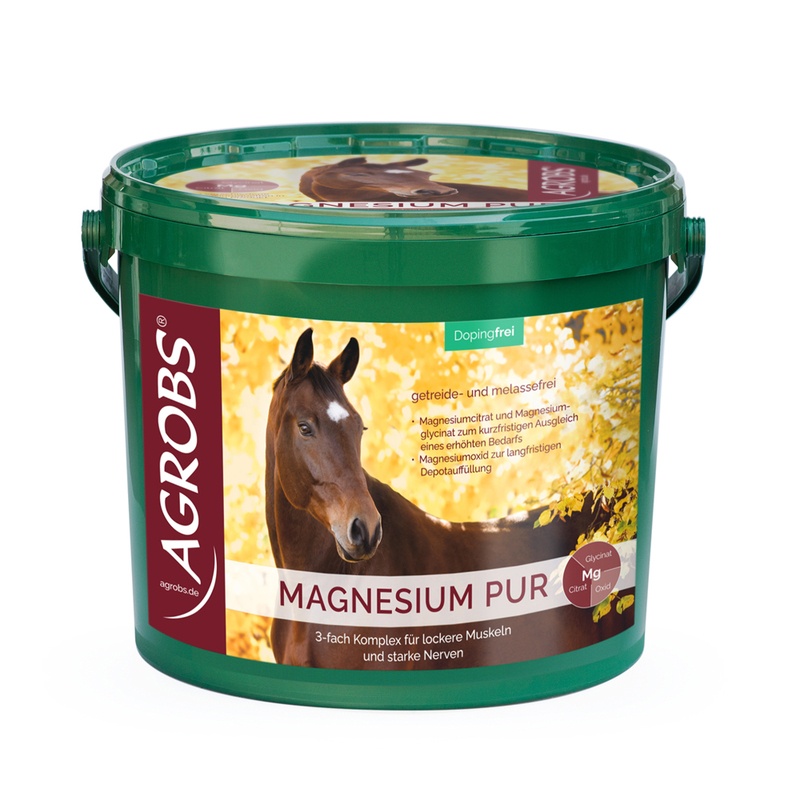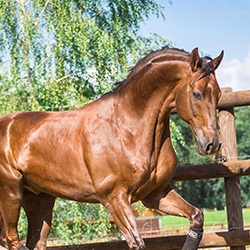
Feeding the sport horse
How can I best feed my sport horse? When is a horse a sport horse? And what are the problems associated with feeding sport horses?
When can I call my horse a sport horse?
There are 165,246 competition horses registered with the German Equestrian Federation. That corresponds to 18% of all horses in Germany. But is a horse that competes at shows automatically a sport horse? And what about horses that don’t compete in conventional ways?
There is no scientific definition of a sport horse. In the literature, however, there are classifications for equine performance based on different work intensities. Performance describes the horse’s work per unit of time. The intensity of the required performance is conveyed reliably through heart rate. This results in the requirement of convertible energy, depending on the exact work of the horse. The performance requirement is added to the maintenance requirement – what the horse needs to keep all bodily systems functioning and varies according to body weight and breed. Factors for the performance requirement include work intensity, speed, duration, terrain, rider weight and equipment weight. A horses work performance can be generally classified as minimal, light, moderate or heavy work. More information can be found in the following table.
Work intensity
|
|
Minimal |
Light |
Moderate |
Heavy |
|
Performance requirement |
Maintenance x 1.125 |
Maintenance x 1.25 |
Maintenance x 1.5 |
Maintenance x 2 |
|
Work |
Considerably less than an hour and/or almost exclusively at a walk |
Up to an hour, e.g. 30 minutes walk, 15 minutes trot, 10 minutes canter |
More than an hour, e.g. 30 minutes walk, 30 minutes trot, 15 minutes canter |
Rarely occurring, long and intensive work, e.g. 30 minutes walk, 45 minutes trot, 30 minutes canter |
|
Example |
Young horses, senior horses, injured/recovering horses, leisure horses |
Leisure horses and lower show classes |
Dressage, show jumping, trekking, eventing |
Work horses, endurance horses |
Illustration based on: Coenen, M.; Vervuert , I. (2020): Pferdefütterung.
Roughage for the sport horse
Roughage, found in forage, always forms the foundation of the equine diet, including for sport horses. This is because the equine digestive tract is designed to digest forage (learn more in our article The journey through the digestive tract). It not only delivers energy and nutrients, it also ensures a slow and steady food absorption, stimulates chewing, prevents boredom and “feeds” the microorganisms in the large intestine. Horses should get at least 1.7 kg hay per 100 kg body weight daily; a 600 kg horse needs at least 10 kg hay. In addition to hay, horses can get roughage from high-quality haylage or pasture grass. With either haylage or pasture grass, a horse will need a larger quantity (e.g. at least 2 kg haylage per 100 kg body weight) due to these feeds’ higher moisture content. Even today, some sport horses still get only 1 kg hay per 100 kg body weight and substantially more concentrate feed, although the official recommendation since 2010 has been for sport horses to get at least 1.7 kg of hay for each 100 kg of their body weight.
Give your horse roughage that is high in quality and high in digestibility. Large amounts of hard-to-digest roughage lead to an unnecessary filling of the digestive tract and put strain on a horse’s energy balance, water balance and thermoregulation. Forage that’s not clean can cause fermentation problems in the stomach and bowel. Dusty feeds should be avoided as it can make problems for the horse’s respiratory apparatus. Special care must be taken during harvesting and storage of roughage, as it is not possible to process roughage of poor quality and hygiene. The structure of easily digestible forage can bind larger amounts of water and electrolytes in the gut, promoting their absorption. This makes it easier for the horse to compensate for loss of fluids through sweat, for example. The equine digestive tract is built for a constant intake of food. No more than 6 hours should pass between feedings, and the hay ration should be divided up into several portions throughout the day.
In addition to roughage, sport horses, depending on their work levels, need additional energy, amino acids, vitamins, bulk and trace elements and (if they perspire heavily) salts.
Energy and protein for the sport horse
A horse with performance demands must get an adequate supply of energy, develop muscle and have regeneration periods. Let’s take a closer look at energy and protein supply, which are important for muscles.
The equine body needs a continuous supply of energy from feed. Energy sources that support the horse's metabolism include glycogen, glucose, fats, fatty acids, lactic acids and amino acids. The use of these energy sources may be aerobic (slowly obtaining energy, the presence of oxygen to break down carbohydrates, fats and proteins) or anaerobic (rapidly obtaining energy, without the involvement of oxygen, partially producing lactic acid as a product of metabolism). Heart rate, oxygen consumption, blood lactate and free fatty acids in the blood can be used as parameters to track the effort required by the body to provide energy.
A horse’s ability to perform is influenced by muscle glycogen content before work and blood glucose availability during work. In this context, one may of course ask whether glycogen reserves can be increased through feed. In humans, the influence of reserves is possible by up to 50%. In horses, dietary measures can influence reserves by up to 10%, whereby large amounts of carbohydrates increases the risk of digestive disorders. However, feeding will not influence glycogen production after breakdown during work. The reserves are not fully replenished until after 48-72 hours.
What are the right energy sources to feed my horse?
As mentioned above, the digestive tract is designed to digest feed that is high in fibre and low in easily digestible carbohydrates. However, many horses are given feeds that are high in cereals and starch. High cereal consumption may even be accompanied by a reduction in base feed, which can have negative effects on health and ultimately on performance. Instead of large quantities of cereals, a sport horse can also be given fibre-based products which, in combination with other energy sources, can still have a high energy density.
In a study using young and trained racehorses, the feeding of high-energy roughage was shown to have positive effects on health. The addition of small amounts of vegetable oils like linseed oil delivers high-concentrated energy. In any event, horses should be given a maximum of 300 g of concentrate feed per 100 kg of body weight. Horses with sensitive digestive tracts should be given no more than 200 g concentrate feed per 100 kg of body weight. Concentrate feed should be given directly before exertion, otherwise preferably 3 to 5 hours prior. Like forage, concentrate feeds should be of high quality.
If a sport horse doesn’t get sufficient energy through its feed, its body begins to mobilise its energy reserves and break down body fat. A ration calculation is therefore useful for comparing the horse’s energy requirement and energy supply. More information on this topic can be found in our article Sources of energy in horse feeds.
Protein is needed not only to build a sport horse’s muscles, but also to compensate for nitrogen loss through sweat and for the maintenance and function of all body tissues. The body does not obtain energy from protein until its protein requirement is exceeded. For a sport horse, the ratio of grammes of pre-caecal digestible protein to megajoules of metabolisable energy is about 6:1. Even in sport horses, the total protein requirement is normally not only covered but often exceeded by the corresponding amounts of base feed and concentrates. It is worth taking a closer look at supply in view of the current low protein levels in hay. Also important, in addition to the total amount of protein in the ration, are digestibility and the presence of essential amino acids. Lots of protein doesn’t automatically mean high protein digestibility or high levels of essential amino acids. Essential amino acids are necessary components of the equine body’s own protein and must be taken in through feed.
In humans, intensive muscle work leads to a temporary decrease in muscle protein. This is followed by muscle regression and then muscle regeneration. The proteins that result from muscle breakdown are used as markers. In a study involving trotters, a high concentration of one of these proteins was found after intensive work. The regeneration of muscle protein is determined through essential amino acids and primarily by leucine. The feed has short-term effects on the amino acid levels in the blood. In a research project involving supplementation with a highly concentrated amino acid mixture, amino acid concentration in the blood was higher than in horses without supplementation for a period of 4 hours. The study not only showed that the administration of essential, branched-chain amino acids accelerated muscle regeneration; it also inhibited muscle protein breakdown during training. This effect requires that the amino acids be consumed around the same time as the work, i.e. shortly before or after. Tests have shown that thoroughbreds given a special protein-amino acid mix delivered improved performance. You can learn more about proteins and amino acids in our articles Protein in horse feeds and Amino acids in horse feeds.
Electrolyte and water for sport horses
A horse’s water requirement will largely depend on external factors. You can generally start with 4-6 litres of water daily for each 100 kg of body weight. So a 600 kg horse drinks 24 to 36 litres of water. Hard work and warm weather can increase this by up to 300%. A horse consumes water not just by drinking, but also through the moisture content of its feed. One example of feed with a high moisture content is fresh pasture grass.
The body’s water balance plays an important role in thermoregulation. Thermoregulation helps to keep the body’s core temperature constant through the production and release of heat.
When a horse uses energy during work, almost 75% of this energy is in the form of heat. If the horse is expected to deliver athletic performance, the generated heat can cause its body temperature to rise to over 40 °C. This heat must now be released through respiration and from the surface of the body. Here various processes play a role, whereby cooling the body through evaporation of moisture is particularly efficient. Evaporation via the respiratory tract is important during prolonged and relatively constant physical activity, and takes place without the loss of electrolytes. The formation of sweat on the body’s surface, however, causes it to lose electrolytes as well as water. Important in this context: at a certain body temperature, the body produces sweat even when water and electrolyte reserves are depleted. A horse used for sports should always be given sufficient water and electrolytes. Very heavy physical exertion in a very short period of time and the associated rapid rise in core body temperature will result in heavy perspiration.
Let’s take a closer look at a horse’s sweat: when a horse sweats, it loses primarily electrolytes and water, but also smaller amounts of proteins, whereby the sweat’s exact composition can vary slightly. There are differences in the composition of sweat, for example between different breeds, types of use or acclimatisation, but these differences are negligible in practice.
With each litre of sweat, a horse loses large amounts of sodium (about 3.1 g), potassium (about 1.6 g) and chloride (about 5.5 g). Because sport horses sweat a lot, it is recommended that they be given supplemental sodium and chloride, ideally through a salt lick to which they have free access. Potassium needs no supplementation as the potassium requirement is normally substantially exceeded through adequate forage and the equine organism has access to potassium from the large intestine if sweating causes levels in the blood to drop. Magnesium is lost through sweat in slightly smaller amounts than sodium, potassium, or chloride. However, ensuring an adequate supply is especially important for sport horses, as magnesium is used up more rapidly due to increased physical and mental strain, particularly in stressful situations. Additional supplementation of electrolytes is only necessary in the case of extreme water loss through perspiration, in which case it should be given after work or during a break. Salt will make a horse thirsty, so water should always be available.
If the horse sweats heavily and cannot compensate for the loss of salt and water, it will experience a drop in performance as well as potential health problems. A loss of water through sweat can be better compensated for from the outset by increasing the amount of water and electrolytes in the gut – this can be done by feeding the horse easy-to-digest, high-fibre and high-pectin feeds.
Give the horse time to become accustomed to being given additional salt, either alone, mixed into feed or in the horse’s drinking water, especially if long-term.
How do I determine how heavily my horse sweats? You can do this through what is known as sweat scoring, which is illustrated in the following table:
|
Sweat score |
Description |
Sweat loss in litres for a 600 kg horse |
|
1 |
Saddle area partly dry, neck area sticky, flanks somewhat darker |
1-4 |
|
2 |
Saddle area and neck wet, formation of foam at the end of the saddlecloth/inside leg and where the rein makes contact with the neck |
>4-7 |
|
3 |
Bridle leaves impression, neck and saddle area completely wet, flanks damp |
>7-9 |
|
4 |
Neck and flanks completely wet, damp folds over eyes, inside leg white |
>9-12 |
|
5 |
Also dripping wet over eyes and under belly |
>12-18 |
Based on Zeyner at. al. 2013, Gfe 2013
The amount of sweat is dependent not only on the horse's work, but also on factors like humidity, air temperature, coat, fatty tissue and the speed of the air passing over the skin’s surface.
Doping-relevant feeds in equestrian sport
The owner of a horse competing in shows should have certain knowledge about doping relevant substances. The majority of these substances are consumed through feeds. Doping-relevant substances, even in very small concentrations, can cause positive drug tests in equestrian sport. The cause is either a lack of knowledge about the doping relevance of individual substances or the unintentional contamination of a feed.
Even a horse’s forage can be theoretically contaminated by plants like opium poppy, jimson weed or autumn crocus being unintentionally harvested along with the grass or hay. These plants contain different alkaloids that are listed as doping substances. Drying also does not noticeably lower the concentration of alkaloids in the forage. Doping relevant substances can also “contaminate” concentrate feed. For example, jimson weed or jimson weed seeds, which can find their way into grains, linseeds, sunflower seeds and soya. When horse feed is produced by machines which earlier mixed ruminant feeds, this can lead to a contamination with doping-relevant substances from the ruminant feed. One example of this is contamination from cacao bean residues which contain caffeine.
In addition to undesirable contaminants in the feed, there are also some doping relevant substances that are nevertheless intentionally included in feed. For most of these, a waiting period applies. These rules on waiting times are issued by the German Equestrian Federation and serve to prevent positive doping test results. One example of a waiting period involves the use of essential oils – more than 0.5% in the feed requires a waiting period of 48 hours before competition. Other known doping relevant substances in complementary feeds include devil’s claw, valerian and guaraná. While devil’s claw shows anti-inflammatory properties, valerian has slightly sedative effects and the stimulating effects of the caffeine in guaraná makes it one of the substances and methods banned in competition. Doping relevant substances are frequently raw materials with certain effects which, for example, affect behaviour, health or performance.
Particular attention should be paid to possible doping relevant substances in sport horses in connection with competitions.
Problems with the sport horse diet
A key issue in feeding sport horses is a physiologically accepted energy supply. In most cases the horse is eating too little roughage and extremely high amounts of high-energy, high-starch concentrates.
Large amounts of starch in feed as well as intervals of more than 6-8 hours between feedings can cause stomach ulcers. Lesions in the gastric mucosa are caused not just from feeds, but also from medications, stress, stable management and intensive athletic work. Often, they arise from a combination of several factors.
Numerous studies have shown high starch consumption to be a risk factor for stomach lesions. At the same time, feeding high quantities of concentrate feed leads to poor intermixing of these very solid stomach contents. As a result, the concentrated food remains in the stomach for longer, with a build-up of gastric acid and increased bacterial activity. In the stomach, the bacteria break down carbohydrates in the food, producing short-chain fatty acids. These fatty acids, together with the increased acid levels, can have negative impacts on the health of the stomach lining.
The use of substances that buffer stomach acid is generally unsuccessful in the prevention of stomach ulcers. On the contrary: long-term, excessive feeding can cause the stomach to produce more acid in order to restore the corresponding pH value. From a scientific point of view, these substances cannot be recommended. Instead, an equine-appropriate diet that is forage-based with limited amounts of starch is effective in helping to prevent feed-related stomach issues.
Read more about stomach problems in our article Equine stomach problem and learn more about the use of starch in our article Starch in horse feeds.
In addition to digestive problems, many sport horses are also affected by problems with the musculoskeletal system, for example with tendons, ligaments, joints, muscles, and bones. Here, too, it is important to start with a diet that covers the horse’s requirements: this applies both to an energy supply that keeps the horse at an ideal weight as well as to micronutrients. There are many feed supplements on the market geared to tendons, ligaments and joints. However, scientific research has not yet provided clear results on the effectiveness of their various ingredients. With sport horses, one must also be aware of potential doping risks (for example with devil’s claw, which inhibits inflammation and alleviates pain).
Designing rations with examples
The feeding of sport horses is based on the same principles for feeding leisure horses: an adequate supply of forage and at least coverage of the maintenance requirement through base feed, coverage of the performance requirement through base feed and/or concentrates, coverage of mineral, electrolyte and water requirements. With increasing work intensity, putting the ration together becomes more challenging, as there are more or less significant changes with regard to the horse’s energy, water, mineral and electrolyte metabolisms. Points to consider when planning rations for sport horses:
- The horse’s work level (light/moderate/heavy) and type of performance (short/long periods of exertion, aerobic/anaerobic range, equestrian discipline)
- An adequate amount of easy-to-digest, high-quality forage, supplemented with hay replacers if applicable
- Easy-to-digest structural substances in forage have a positive effect on water and electrolyte metabolism
- Increase energy intake by increasing the amount of base feed and concentrates, use of cereals (note the maximum amounts of concentrates and starch), use of fats as an alternative or supplement to cereals
- An adequate supply of essential amino acids
- Supply of vitamins, minerals and trace elements to cover requirements
- An adequate supply of water
- Salt lick and extra electrolytes, depending on amount of fluids lost through sweat
Below are a few sample rations for different equestrian disciplines in higher performance classes, one without cereals and one with cereals. Learn why some horses benefit from a cereal-free diet in our article Why cereal-free feeds. Equine dietary requirements will depend on the performance required of the horse. Show jumpers and racehorses need targeted and immediate energy for short periods of intensive muscle work. A majority of this energy is obtained through anaerobic metabolic pathways via glycogen. The total requirement for show jumpers and racehorses during training and competition (maintenance plus performance requirement), is between 1.4 and 2 times the maintenance requirement, depending on the exact work level.
For eventing, dressage and endurance horses, the work is more of a continuous aerobic intensity with individual anaerobic peaks in between. For a dressage horse, the total requirement is on average 1.5 times the horse’s maintenance requirement; for an endurance horse it is 2 times higher. During long work periods, energy supply isn’t the only factor in performance – the production, storage and release of heat and the compensation of water and electrolyte losses play important roles as well.
Keep the following in mind: Not every dressage horse automatically has a total requirement that is 1.5 times higher than its maintenance requirement. These are approximate guidelines which must always be assessed on the basis of the horse's individual work (light/moderate/heavy). If, for example, a dressage horse only works 30 minutes each day, this would likely be considered light work, even if it involves difficult movements. This applies not just to dressage horses, naturally, but to horses in all equestrian disciplines. Below we present a few sample rations.
|
|
Provided by the stable |
with cereals |
without cereals |
|
Frido 12 years old |
11 kg hay 2 hours pasture in summer Salt lick |
1.5 kg oats 0.5 kg AlpenGrün Mash 60 ml Linseed oil 90 g Amino Pur |
2 kg AlpenGrün Müsli 0.5 kg AlpenGrün Mash 60 ml Linseed oil 90 g Amino Pur |
|
Amanda 9 years old |
9 kg hay 1 hour pasture in summer Salt lick |
1.5 kg Myo Protein Flakes 1 kg oats 0.5 kg AlpenGrün Mash 50 ml Linseed oil
|
1.5 kg Myo Protein Flakes 1.4 kg AlpenGrün Pellet 0.5 kg AlpenGrün Mash 50 ml Linseed oil |
|
Luis 10 years old |
10 kg hay 2 hours pasture in summer Salt lick |
2.5 kg Kraftpaket 100 ml Linseed oil 70 g Amino Pur Electrolyte |
2.5 kg Pre Alpin® Wiesenflakes® 2.5 kg AlpenGrün Pellet 1 kg AlpenGrün Mash 100 ml Linseed oil 70 g Amino Pur Electrolyte |
These guidelines are for general use; each horse has its own individual dietary requirements. If you need assistance in feeding your sport horse, contact us for free feeding advice: Feeding advice
Janina Beule, M.Sc. Equine Science
December 2023, © AGROBS GmbH
Sources:
- Coenen, M.; Vervuert I. (2020): Pferdefütterung. Georg Thieme Verlag KG, Stuttgart
- Coenen, M. (2017): Elektrolytversorgung, ein Update. In: Rackwitz, R.; Pees, M.; Aschenbach, J.R.; Gäbel, G. (2017): LBH: 9. Leipziger Tierärztekongress – Tagungsband 2
- Gesellschaft für Ernährungsphysiolgie (GfE) (2014): Energie- und Nährstoffbedarf landwirtschaftlicher Nutztiere Nr.11 Empfehlungen zur Energie- und Nährstoffversorgung der Pferde Ausschuss für Bedarfsnormen der Gesellschaft für Ernährungsphysiologie. DLG-Verlag, Frankfurt/Main
- Hertzsch, R. and Emmerich, I. (2017): Dopingrelevante Futtermittel für Pferde. In: Rackwitz, R.; Pees, M.; Aschenbach, J.R.; Gäbel, G. (2017): LBH: 9. Leipziger Tierärztekongress – Tagungsband 2
- Irgang, K. (2017): Raufutterqualität bei Sportpferden – (k)ein Thema? In: Rackwitz, R.; Pees, M.; Aschenbach, J.R.; Gäbel, G. (2017): LBH: 9. Leipziger Tierärztekongress – Tagungsband 2
- Kamphues, J.; Coenen, M.; Eider, K.; Iben, C.; Kienzle E.; Liesegang, A.; Männer, K.; Wolf, P.; Zebeli, Q.; Zentek, J. (2014): Supplemente zur Tierernährung: für Studium und Praxis. Schlütersche, Hannover
- Martschitz, C. (2021): Sportpferdefütterung in Österreich – Wahl und Menge des Grund- und Kraftfutters. URL: https://phaidra.vetmeduni.ac.at/open/o:872
- Ringmark, S.; Revold, T.; Jansson, A. (2017): Effects of training distance on feed intake, growth, body condition and muscle glycogen content in young Standardbred horses fed a forage-only diet. In: Animal, Volume 11, Issue 10. URL: https://doi.org/10.1017/S1751731117000593
- Van den Hoven, R. (2017): Aminosäuren-Supplementierung nach der Belastung? In: Rackwitz, R.; Pees, M.; Aschenbach, J.R.; Gäbel, G. (2017): LBH: 9. Leipziger Tierärztekongress – Tagungsband 2
- Venner, M. and Vervuert, I. (2017): Fütterung zur Prävention von Magengeschwüren beim Sportpferd, ein Update. In: Rackwitz, R.; Pees, M.; Aschenbach, J.R.; Gäbel, G. (2017): LBH: 9. Leipziger Tierärztekongress – Tagungsband 2
- Vervuert, I. (2017): Cobalt und Co? Wieviel Spurenelemente braucht ein Sportpferd? In: Rackwitz, R.; Pees, M.; Aschenbach, J.R.; Gäbel, G. (2017): LBH: 9. Leipziger Tierärztekongress – Tagungsband 2
- Winter, D. (2017): Energie- und Eiweißversorgung beim Sportpferd, was gibt es Neues? In: Rackwitz, R.; Pees, M.; Aschenbach, J.R.; Gäbel, G. (2017): LBH: 9. Leipziger Tierärztekongress – Tagungsband 2
- Zeyner, A.; Romanowski, K; Vernunft, A.; Harris, P.; Kienzle, E. (2013): Scoring of sweat losses in exercised horses – a pilot study. In: Animal Physiology and Animal Nutrition. Volume 98, Issue 2. URL: https://doi.org/10.1111/jpn.12073




